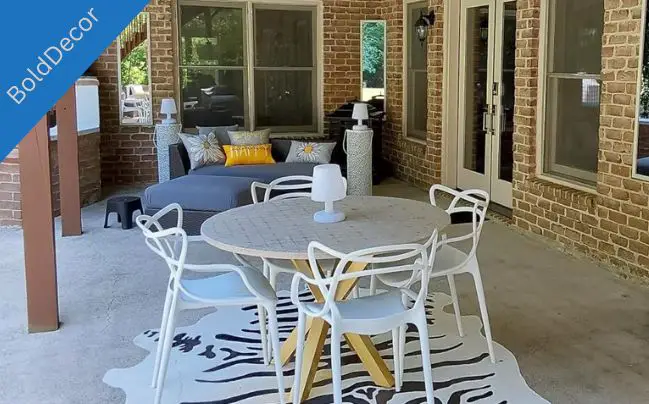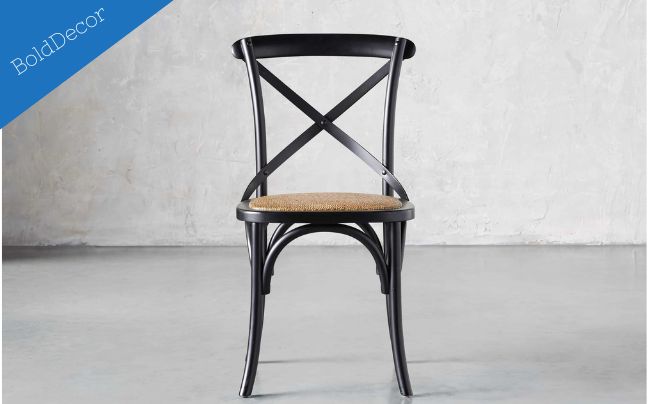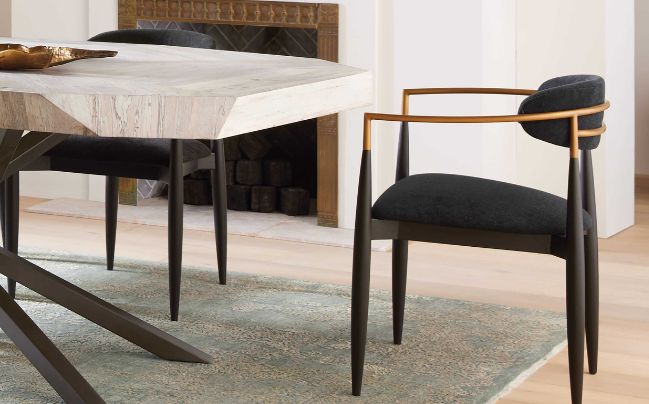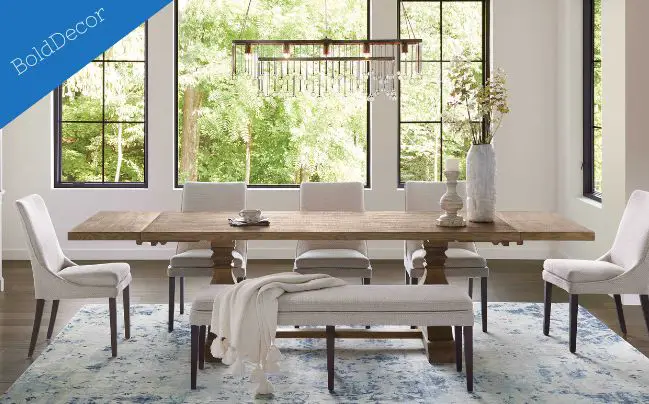As someone who takes pride in their dining table, I understand the importance of Protecting Dining Table. From scratches to spills, there are plenty of potential hazards that can detract from your table’s beauty and integrity.
But fear not, with the right tips and tricks, you can effectively safeguard your dining table and ensure it looks its best for years to come.
Key Takeaways
- Proper protection of your dining table is crucial for its longevity and beauty.
- Choosing the right table cover and table protector are essential components of dining table care.
- Regular cleaning and maintenance are crucial for preserving your table’s appearance.
- Preventing sun damage and scratches are important aspects of protecting your dining table.
- With the right long-term strategies and occasional repairs, you can keep your dining table in excellent condition.
Table of Contents
Choosing the Right Table Cover
When it comes to dining table preservation, the right table cover can make all the difference. Whether you opt for a tablecloth or a more durable table pad, selecting a cover that suits your needs is essential for maintaining the integrity of the table’s surface.
If you prefer a traditional look, a tablecloth is an excellent choice. Available in a wide range of colors, textures, and patterns, a tablecloth can provide an elegant and inviting atmosphere to any dining room setting. However, keep in mind that tablecloths may not offer the same level of protection as a table pad.
On the other hand, a table pad is thicker and more durable, making it ideal for protecting your dining table from spills, scratches, and heat marks. Made of materials like felt, cork, or vinyl, these pads come in various shapes and sizes, providing a custom fit for your table.
When selecting a table cover, it’s essential to consider the size and shape of your dining table, as well as your lifestyle and needs. A tablecloth may be suitable for formal dinner parties, while a table pad is more practical for everyday use. Ultimately, the right table cover comes down to personal preference and the level of dining table preservation you wish to achieve.
Using Table Protectors
When it comes to protecting your dining table, using a table pad or protector is an effective way to safeguard against damage. Table protectors act as a barrier between your table and common sources of harm, such as scratches, spills, and heat marks.
Table pads are available in a variety of materials, including vinyl, felt, and even cork. Consider which factors are most important to you, such as durability, ease of cleaning, and appearance, when selecting a table pad or protector that will best suit your needs.
Choosing the Right Table Pad
When choosing a table pad, consider the size and shape of your dining table. You’ll want to ensure that the pad fits properly and doesn’t move around during use, which can cause damage to the table’s surface.
For a rectangular or oval table, look for a pad that is slightly larger than the table’s dimensions. This will provide ample coverage and prevent the pad from slipping. For a round table, opt for a circular table pad that fits snugly around the table’s edge.
Caring for Your Table Pad
Proper maintenance is important for ensuring the longevity of your table pad and preserving the beauty of your dining table. To clean your table pad, use a mild detergent and warm water, and then wipe dry with a soft cloth. Avoid using harsh chemicals or abrasive materials, which can damage the pad’s surface.
Remember to remove the pad periodically and inspect the table’s surface for any signs of damage or wear. Catching and addressing issues early can help prevent long-term damage and the need for costly repairs.
Benefits of Using a Table Protector
Using a table pad or protector offers a number of advantages beyond protection against damage. These accessories can also help prolong the life of your table, prevent fading and discoloration from sunlight, and add a layer of insulation against heat and cold.
Additionally, using a table protector can help transform the look of your dining table, allowing you to switch up your decor with ease. A stylish tablecloth or sleek vinyl pad can make a statement and enhance the overall aesthetic of your dining space.
Investing in a quality table pad or protector is a simple and effective way to keep your dining table in top condition for years to come.
Proper Cleaning and Maintenance
Regular cleaning and maintenance are essential for ensuring your dining table stays in pristine condition. By following these tips, you can maintain the beauty and integrity of your table for many years to come:
- Keep it clean: Wipe your table down after each use with a soft, damp cloth. Avoid using harsh chemicals or abrasive scrubs that can damage the table’s surface.
- Use the right products: When it’s time for a deeper clean, use a mild, non-abrasive cleaner that’s safe for your table’s surface. Always follow the manufacturer’s instructions.
- Take care with spills: If you spill something on your dining table, act quickly to prevent stains from setting in. Blot the spill with a clean, dry cloth, and then clean the area with a damp cloth. Avoid rubbing the spill, as this can spread the stain.
- Protect it from heat: Always use coasters or trivets when placing hot dishes or pots on your dining table. Hot dishes can cause heat marks or even burn the surface of your table.
- Rotate decor: If you have a centerpiece or decorative items on your dining table, rotate them regularly to prevent uneven fading or discoloration from sun exposure.
- Keep it covered: When not in use, consider covering your dining table with a tablecloth or table pad to protect it from dust, sunlight, and other potential damage.
By following these simple maintenance tips, you can keep your dining table looking beautiful for years to come. Regular cleaning and care are key to protecting your investment and ensuring it continues to serve as the centerpiece of your dining room.
Avoiding Sun Damage
Protecting your dining table from sun damage is crucial if you want it to last for years to come.
Tip: One way to avoid sun damage is to position your dining table away from direct sunlight. If this isn’t possible, consider using window treatments like shades or curtains to block out harmful UV rays.
How Sunlight Can Damage Your Dining Table
Sunlight can cause damage to your dining table in a number of ways. One of the most common is fading, which occurs when the sun’s UV rays break down the pigments in the table’s finish. Over time, this can cause the table to lose its original color and become dull or gray.
Another way sunlight can damage your dining table is by causing cracks or warping in the wood. This happens when the UV rays cause the wood to dry out, which can lead to splitting or other types of damage.
How to Protect Your Dining Table from Sun Damage
The best way to protect your dining table from sun damage is to keep it out of direct sunlight. If this isn’t possible, there are other steps you can take to shield it from the sun’s harmful rays.
One option is to use window treatments like shades or curtains to block out the sun. Another option is to use a tablecloth or cover to protect the table’s surface. If you’re looking for a more permanent solution, you can also consider applying a protective coating to the table’s surface.
Preventing Scratches and Dents
As much as possible, we want our dining table to maintain its flawless beauty. Dents and scratches can be a real eyesore, and can make even a brand-new table look old and worn-out. However, preventing these damages is easier than you might think.
One of the simplest ways to prevent scratches is to avoid dragging items across the table’s surface. This can include dishes, utensils, or anything with rough or sharp edges. Instead, lift the item and place it gently on the table.
Using coasters and placemats can also help protect your dining table from scratches and dents. Placing these accessories under dishes and glasses can provide an additional layer of protection against accidental bumps and scratches.
Coasters
| Pros | Cons |
|---|---|
| Prevents water rings and stains from forming on the table surface. | Some coasters may not be effective in preventing scratches. |
| Comes in a variety of materials and styles to match your décor. | May require frequent cleaning or replacement if used frequently. |
| Affordable and easy to find in most home retail stores. | May take up additional space on the table, depending on the size and shape of the coaster. |
Placemats
| Pros | Cons |
|---|---|
| Covers a larger surface area than coasters, offering more comprehensive protection. | May not be as effective in preventing scratches as other table protectors. |
| Comes in a variety of materials and styles to match your dining room décor. | May require frequent washing or replacement if used frequently. |
| Provides a designated space for each person at the table, reducing clutter and confusion. | May require additional storage space when not in use. |
Felt pads can also be used as an additional layer of protection on the legs of your dining table and chairs. These can minimize the risk of deep scratches caused by furniture movement or accidental impacts.
By implementing these tips and tricks, you can effectively protect your dining table from scratches and dents, keeping it in top condition for years to come.
Handling Spills and Stains
When it comes to dining table care, spills and stains are among the most frequent and frustrating types of damage. However, with a little knowledge and the right techniques, you can effectively handle these issues and protect your table from long-term damage.
The key to handling spills and stains is to act quickly. As soon as you notice a spill, use a clean, absorbent cloth to blot up as much of the liquid as possible. Avoid rubbing the stain, as this can work the liquid deeper into the table’s surface.
For more stubborn stains, there are several solutions you can try. One effective option is to mix a small amount of dish soap with warm water and gently clean the affected area with a soft cloth. Another common solution is to use a mixture of baking soda and water, which can help to absorb the stain and neutralize odors.
If you’re dealing with a particularly stubborn stain, you may need to use a specialized cleaning product. Be sure to read the manufacturer’s instructions carefully and test the product on a small, inconspicuous area of the table before using it on a larger stain.
Remember to always rinse the table with clean water after cleaning to remove any residue from the cleaning solution. Lastly, use a dry cloth to gently blot the table and remove any excess moisture.
Pro Tip: If you’re dealing with a red wine stain, try sprinkling a generous amount of salt over the affected area as soon as possible after the spill. The salt will help to absorb the liquid and prevent the stain from setting in.
Long-Term Protection Strategies
Protecting your dining table is not just a one-time job. You must develop a regular maintenance routine and implement occasional refinishing to keep it in top condition for years to come. Investing in quality materials can also go a long way in ensuring your table’s long-term preservation.
A good way to maintain your table’s beauty is to clean it regularly. Dusting the table with a soft, dry cloth can help prevent scratches and other damages. You can also use a damp cloth to wipe down the surface, but be sure to dry it thoroughly to prevent water damage.
Long-Term Protection Tips
| Tips | Benefits |
|---|---|
| Use a table pad or protector | Provides an additional layer of protection against scratches and spills. |
| Position your table away from direct sunlight | Protects your table’s surface from fading and discoloration caused by harmful UV rays. |
| Invest in quality materials | Ensures your table lasts longer and can withstand wear and tear. |
| Occasionally refinish your table | Restores your table’s original luster and beauty. |
Occasional refinishing can also help keep your dining table looking its best. Refinishing involves removing the old finish and applying a new one. This can help repair minor damage, such as scratches, and restore the table’s original luster and beauty.
Investing in quality materials is also essential for protecting your dining table. Solid wood tables are generally more durable and longer-lasting than laminate or particleboard tables. Choosing a high-quality finish can also help protect the table’s surface from scratches and other damage.
Overall, protecting your dining table requires a combination of regular maintenance, long-term strategies, and the right materials. By following these tips and tricks, you can ensure your table remains beautiful and functional for years to come.
DIY Repairs and Touch-Ups
Even with the best efforts to protect your dining table, minor damages may occur over time. But don’t worry; you can easily address these issues with a few simple DIY repairs and touch-ups.
For small scratches and dents, you can try using a wood filler. Apply the filler with a putty knife, let it dry, and then sand it down until it’s smooth.
If your table has a more significant scratch or ding, you may need to consider sanding and refinishing the affected area. This process involves sanding down the area to remove the old finish and then applying a new finish to match the rest of the table.
For light scratches, you can try using a furniture touch-up pen. These pens come in a variety of colors and are a quick and easy way to conceal small scratches and scuffs.
In some cases, your table may need to be completely refinished. This process involves stripping the old finish and applying a new one. While it may sound daunting, refinishing your dining table can give it a fresh new look and protect it for years to come.
Remember to always follow the proper safety precautions when working on your dining table. Use protective gear, such as gloves and goggles, and work in a well-ventilated area.
Bottom line
Protecting your dining table is an important investment in the longevity and beauty of your furniture. By following the tips and tricks outlined in this article, you can maintain your table’s appearance and protect it from damage.
Remember to Choose the Right Cover
When it comes to protecting your dining table, choosing the right cover is critical. A tablecloth or table pad can provide a barrier against spills and scratches, and selecting the right material for your needs is key.
Take Care with Cleaning and Maintenance
Regular cleaning and maintenance are essential for protecting your dining table. Using the right cleaning products and techniques can help preserve its appearance and avoid damage over time. Remember to be gentle and avoid harsh chemicals.
Avoid Sun Damage
UV rays from the sun can cause discoloration and fading on your dining table’s surface. By positioning your table out of direct sunlight and using window treatments to block harmful rays, you can prevent this type of damage.
Prevent Scratches and Dents
Small measures like using coasters and felt pads can go a long way in preventing scratches and dents on your dining table’s surface. These small investments can save you from costly repairs in the long run.
Long-Term Protection Strategies
Investing in quality materials and implementing regular maintenance routines are some of the best ways to protect your dining table for the long haul. Occasional refinishing and repairs can also help keep your table looking like new.
DIY Repairs and Touch-Ups
Minor damages to your dining table, like small scratches or chips, can be easily repaired at home. By following simple instructions and using readily available materials, you can quickly restore your table’s original charm.
Remember, your dining table is an important piece of furniture that often acts as the centerpiece of your home. Take care of it, and it will serve you well for many years to come.
FAQ
Will using a table cover prevent scratches on my dining table?
Yes, using a table cover such as a tablecloth or a table pad can provide an extra layer of protection against scratches.
How often should I clean and maintain my dining table?
It is recommended to clean and maintain your dining table regularly, ideally after each use, to keep it looking its best.
How can I prevent sun damage to my dining table?
Avoid placing your dining table in direct sunlight and use window treatments to shield it from harmful UV rays.
What are some effective methods for removing stains from a dining table?
Depending on the type of stain, using a mild cleaning solution or a mixture of vinegar and water can help remove stains from your dining table.
How can I prevent scratches and dents on my dining table?
Placing coasters, placemats, and felt pads under furniture legs can help prevent scratches and dents on your dining table.
Are there any long-term strategies for protecting my dining table?
Yes, regular maintenance routines, occasional refinishing, and investing in quality materials can help protect your dining table in the long run.
Can I repair minor damages on my dining table myself?
Yes, minor repairs and touch-ups can be done yourself using appropriate materials and following step-by-step instructions.






